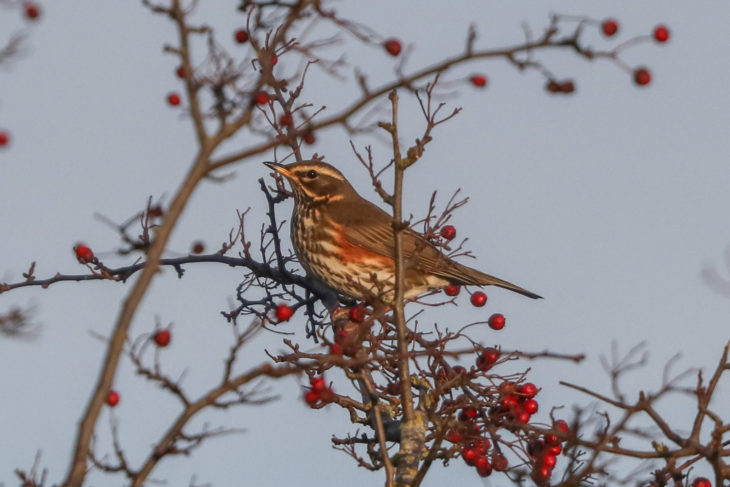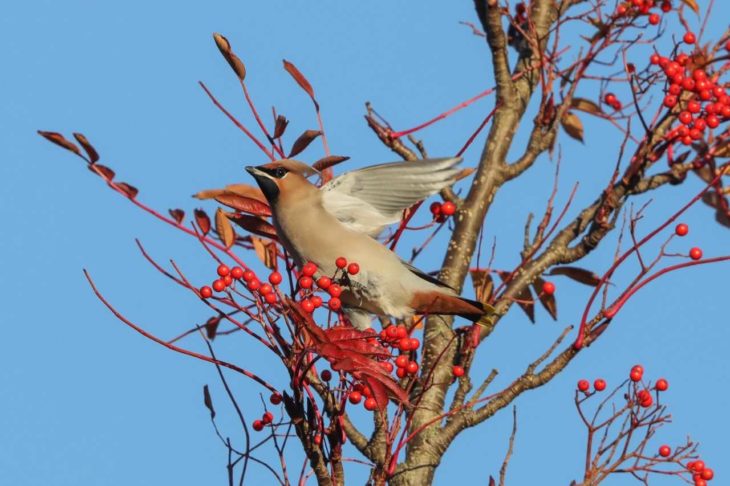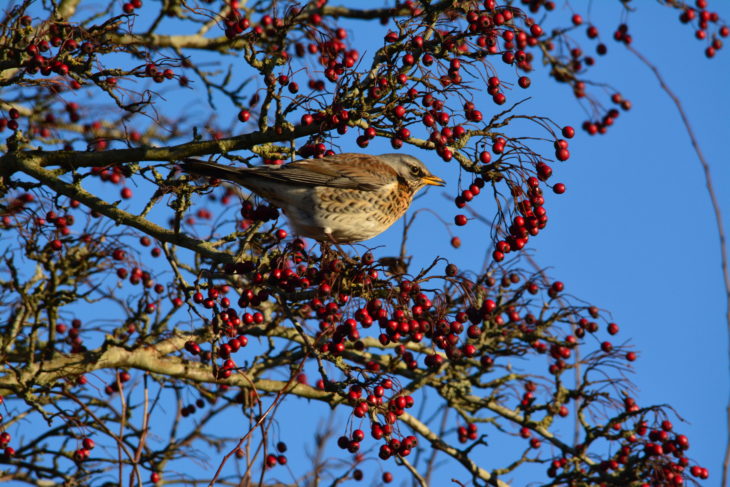Winter visitors – redwings, waxwings and fieldfares
We’ve been seeing a lot of winter visitors lately in Montrose, especially while the rowan trees were full of berries! Here’s a look at a few bird species that you tend to only see at this time of year!
Redwings
The redwing is slightly smaller than a song thrush, with a pale stripe above the eye and another one less pronounced stripe above its cheek. It’s the chestnut-red underwings that give this bird its name though. Even though the males and female are quite similar looking, male redwings have a shorter tail than females. The thin, plaintive whistles that people hear on a misty evening in October and November are most likely to be redwings. These are the contact calls uttered in flight.
Even though a lot of us have seen redwings in our gardens this year, they aren’t generally garden birds. They will go to them during hard winters in search of food. They eat invertebrates but favour berries in autumn and winter. Most redwings arrive in September and October, crossing the North Sea from Scandinavia and Russia. Hard weather may force them to migrate further.

Waxwings
Waxwings breed in boreal forests in Scandinavia through to Russia. Although they breed at relatively low densities, a good berry crop in one autumn can ensure a sizeable population makes it through to the following year. Since a poor berry crop is usually followed by a particularly good one, this increased population of birds is likely to find itself short of berries the following autumn. This is when they’re forced to move long distances in search of food.
Outside of the breeding season a waxwing’s favoured food is red rowan berries. Many urban areas contain suitable berry producing bushes and shrubs, which is why local waxwing reports in Montrose often come from places like ‘just outside Tesco’! Because they breed in fairly uninhabited areas, waxwings tend to be quite approachable, providing a great opportunity to try out your photography skills. I’ve also had the pleasure of watching these birds from the comfort of my own living room window, as they go to the park across from my house every year!

Fieldfare
Fieldfares are often seen in big flocks along with redwings. They mostly eat insects and worms taken from the ground, but, like redwings, will eat lots of berries in autumn and winter. Large flocks gather on open fields and grassy areas and they roost in small colonies for extra protection against corvids (which are actively pursued in flight and sometimes bombarded with excrement!).

Lauren McDougall
Visitor Centre Assistant, Montose Basin
Help protect Scotland’s wildlife
Our work to save Scotland’s wildlife is made possible thanks to the generosity of our members and supporters.
Join today from just £3 a month to help protect the species you love.
Preface
We’ve been seeing a lot of winter visitors lately in Montrose, especially while the rowan trees were full of berries! Here’s a look at a few bird species that you …
